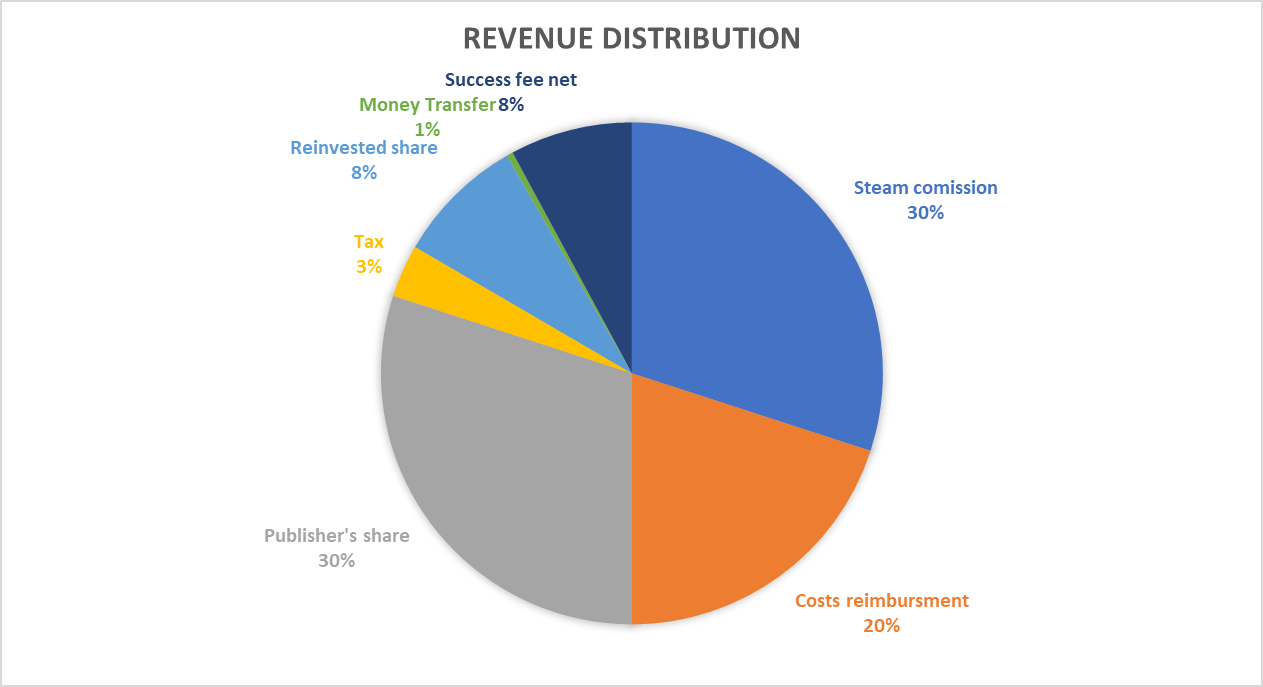Three typical opinions of experienced players or “another donation drop … flax”
I have been developing games for the last 15 years. I was lucky to work both in large corporations like VK (Mail.Ru) and to be an indie developer. I also love games and play regularly myself.
In this note, I want to share my observations about what common misconceptions even the most experienced players have. Interestingly, most of these misconceptions are shared by novice developers (I was no exception). Let’s analyze how they appear, and why it is so important to know how it really is.

1. Greedy developers!
Players often talk about how expensive games are. This applies to both mobile F2P and console AAA hits. The average player sees that they are being asked to pay $100 for Sid Meier’s Civilization and reasonably believe that the developers are making pretty good money from their product. And if they are still slowing down with updates, this raises a logical question, but what the hell ?! To understand this, I suggest looking at the numbers.

Selling a game without a store is almost impossible. Yes, giants like Blizzard have their own stores (Battle.Net). Yes, indie developers sometimes make money from games on Patreon and similar services. But the vast majority of games are released through standardized stores: Steam, AppStore, Google Play and others. The main share of revenue for PC games in the world (excluding the Chinese market) comes from Steam. Its commission for indies and small studios is 30%. For AAA and high revenue products, the commission drops to 20% for $50 million or more.
Thus, almost a third (30%) of the money from the players is taken by Steam. Of the remaining 70%, half or even 60% is taken by the publisher. The money is collected as a return on investment in marketing (Publisher’s costs reimbursement) and as royalties – the share of the publisher in the proceeds from the game (Publisher’s share).
From the remaining 30-35%, the developer needs to pay taxes, cover his own or investor expenses for creating the game. And I would also like to postpone at least something for the creation of the next game, so that the new round of investments would not be the last.
As a result, game development is a rather low-margin business, complicated by high risks of failure that cannot be calculated 100%. That is why investors invest in game development much less willingly than in other IT startups.
We get greedy platforms, greedy publishers. But greedy developers are not about the mass segment of games. Although for AAA this is often true. AAA projects often incur lower costs and commissions, and huge marketing budgets allow you to earn more in the end.
2. Krivorukov igrodely!
Another popular misconception is the production hell and the clumsiness of game developers. I am by no means saying that production hell does not exist. I want to show you that very often it is man-made.
A lot of my co-workers say it’s okay to crunch. In our industry, it is customary to recycle … But I think that these are just mistakes and weaknesses in project management. Or a banal desire to save money. No one bothers to lay in the budget large terms and resources. Yes, sometimes it’s not possible. In this case, you should moderate your ambitions and take on the game easier. But there are other aspects of this problem.
Video games are a very complex and complex IT product. No matter how well the producer and project manager do their job, there is often another force majeure event – the publisher. The contract with the publisher most often does not imply the possibility of rescheduling in case of delay. If you don’t make it on the right day, you pay penalties. The publisher works with a dozen of these games at the same time. Therefore, it is important for him to plan work and marketing budgets for years to come. He already has an agreement for a certain date with influencers, bloggers, gaming press, etc. Now imagine a typical situation: the producer delayed the approval of the concept from the game designer for two days. Development iteration period – 2 weeks. As a result, programmers and artists started work later, which means they finished it later. And at the end of the chain is QA, who, due to the delays of the rest of the team, has only minus 12 hours left to test the build, which should be uploaded to production yesterday. Can QA, forced to work overtime, guarantee quality in such a situation?
Another problem with constantly limited timelines is the lack of motivation for developers to do well. The producer requires them to do the work faster, and therefore they often leave crutches, just to meet the deadline. After all, their salary often does not depend on the quality of the code.
In fairness, I’ll say that there are situations when players are absolutely right when they call developers crooked game developers. Many people have heard the story of Cyberpunk 2077 outsourcing testing. If you are not aware, highly recommend: opens eyes to many problems in the industry.
3. Donate mobile dro****no!
Many gamers are horrified by how much they have to pay in mobile games. At the same time, they also notice that the games have become very similar to each other, the variety of genres is becoming less. These phenomena have a common cause.
In addition to the app store commission and taxes, which we talked about in the first paragraph on the example of the PC, the situation with the cost of marketing is even worse in the mobile games market. If for a computer or console game advertising will cost 0.5-2 times the cost of development, then on the mobile market it can be 10 times higher than the price of the game itself. Not just 10 times, but 10 times a month. So, with a product costing $1 million, it’s perfectly normal to invest $10 million in advertising every month. At the same time, we already know that games are a business with not the highest marginality, which means that the net profit from these $10 million is good if it is $1 million.
Here collected typical CPI figures – the cost per player in mobile games. Let’s take the best option. Let the CPI not exceed $2.5, the percentage of those who pay is not lower than 2%. In this case, one donor needs to pay at least $125 just to recoup the CPI. And then we add here the 30% commission of the store, taxes, expenses for banking transactions, etc.
As a result, each donor of such a seemingly simple game must contribute at least $200 to the game so that it is not unprofitable in principle.
There is such a metric as ARPPU – the average income per payer per month. The top 15 casual and mid-core mobile games have it fluctuating in the range of $25-55. And this means that the developer needs to keep and monetize the player for 4-8 months just to break even.
Top developers of casual games – Playrix, King, Wooga – talk about an average traffic payback period of 6 months. That is, 6 months advertising simply pays off. And if the player still remains to play, then only from the 7th month, the donation will begin to bring net profit.
In conclusion, I would like to note that not everything is as bad as it might seem. Indie games are getting harder to distribute, commercial development is getting expensive. Nevertheless, we see dozens of new cool games every year. For example, I completely surrendered to the charm of the Against the Storm strategy, which was released in early access at the end of 2022.



